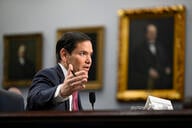You have /5 articles left.
Sign up for a free account or log in.

Maxim Basinski/iStock/Getty Images Plus
In April, Harvard University, despite its $53.2 billion endowment, announced plans for a $750 million bond issuance to bolster liquidity amid uncertainties over federal funding. Similarly, Brown University concluded its decade-long BrownTogether fundraising campaign, raising more than $4.4 billion, yet soon after secured a $300 million loan in the face of a structural budget deficit and the cancellation of federal grants. And in May, Columbia University announced layoffs of approximately 180 staff members after the federal government revoked $400 million in federal grants and contracts, citing the university’s handling of antisemitic harassment on campus.
Together, these actions underscore that even the nation’s most selective and well-resourced universities are vulnerable to financial strain and are recalibrating rapidly in response to shifting economic and political forces. By contrast, less well-resourced, tuition-dependent institutions often confront the same headwinds, or their downstream effects, with fewer financial options and diminished capacity to respond.
Liquidity and the Endowment Misconception
A common misconception is that universities can freely tap into their endowments to address financial shortfalls. In reality, a significant portion of endowment assets are legally restricted by external donor agreements, regulatory frameworks and board policies. According to the NACUBO-Commonfund Study of Endowments, an average 71.1 percent of endowment funds are restricted by donor agreements alone. These funds are typically earmarked for specific purposes such as scholarships, endowed faculty positions or capital projects.
Endowments are vital to institutional operations but are not unbounded. In fiscal year 2024, colleges and universities withdrew a total of $30 billion from their endowments, representing a 6.4 percent increase over the prior year, with nearly half of that spending (48.1 percent) dedicated to student financial aid. On average, endowments funded 15.3 percent of institutional operating budgets, underscoring their importance in day-to-day fiscal planning.
At the same time, most institutions cap annual withdrawals at approximately 4.5 to 5 percent of a rolling three-year average to preserve long-term value. Exceeding these thresholds can jeopardize an endowment’s sustainability and may violate both donor restrictions and regulatory requirements. Consequently, when immediate cash needs surpass allowable draws, universities often turn to bond markets or bank loans, trading short-term liquidity for future debt obligations. According to a Forbes report, U.S. universities issued a record $11.6 billion in municipal bond debt in the first quarter of 2025 to safeguard operations amid federal funding cuts.
Fiscal and Legal Acumen: A New Leadership Imperative
In the current climate, effective university leadership requires not only academic vision but also robust financial and legal expertise. Leaders must navigate complex debt covenants, bond rating pressures and donor restrictions while transparently communicating difficult decisions to trustees, faculty, students and the public. These challenges, at least financially, arguably surpass those faced during the COVID-19 pandemic, when federal relief funds temporarily masked underlying vulnerabilities.
Rising Insolvency Risk Beyond Public Campuses
Recent announcements by private Research-1 universities suggest several well-known institutions—among them Duke and Northwestern Universities—could encounter significant fiscal strain if current federal research funding trends persist. While nonselective public research universities are often viewed as the most vulnerable to federal funding cuts, some prominent private institutions also face rising risk. High fixed costs, tuition and/or research dependency, and limited unrestricted endowment income create financial fragility as grants plateau.
Enrollment Shocks: A Cascade in Waiting
An often-overlooked but potentially destabilizing factor is the cascading effect on enrollment should elite institutions expand freshman classes and nonresearch focused graduate programs by aggressively tapping wait lists to compensate for financial shortfalls. While larger cohorts can spread overhead costs and generate additional tuition revenue, rapid expansion without strategic planning can strain housing, advising and support services, potentially degrading the student experience and affecting retention.
For example, if the top 50 universities each increase enrollment by even 5 percent, thousands of well-qualified students may shift upward, siphoning tuition dollars from regional publics, tuition-dependent privates and community colleges. For institutions already operating on thin margins, this loss of yield could prove existential.
This scenario recalls the 2008 financial crisis: a shock at the top reverberated across sectors. Here, if highly selective colleges “catch a cold,” more vulnerable campuses may suffer a deeper freeze.
Equity and Access Under Pressure
The most severe consequences are likely to impact lower-income students. Potential elimination of federal support programs like federal TRIO programs and Gaining Early Awareness and Readiness for Undergraduate Programs, coupled with the potential cascading effects outlined above, risk widening the affordability gap. To shore up budgets, financially stressed institutions may tighten aid packages and prioritize full-pay applicants. Simultaneously, regional institutions that disproportionately serve these populations face their own budget constraints, compounding threats to access and social mobility. Conversely, other financially stressed colleges may opt to elevate unfunded tuition discount rates to unsustainable levels in order to meet enrollment targets, an action we have witnessed during less stressful periods.
Summer Melt: An Immediate Barometer
The impending summer melt period—when students who have submitted deposits ultimately decide not to enroll—may serve as a real-time stress indicator. Historically, national melt rates hover around 10 to 20 percent, but even a two- to three-percentage-point uptick for small, tuition-driven colleges can force emergency cuts. If selective universities reach deeper into their wait lists this summer, downstream institutions could experience sudden enrollment gaps as fall semesters are about to begin.
Toward Long-Term Resilience: Strategic Levers
As the financial headwinds intensify, universities must couple urgency with discipline. Ensuring alignment among institutional leaders, preserving trust and activating institutional flexibility will be key. The following strategic levers offer a practical framework for leaders aiming to build resilience without losing sight of mission.
- Ensure board and leadership alignment: Any misalignment between governing boards and executive teams can slow decision-making and erode credibility. Clear alignment around scenario planning, liquidity thresholds and contingency triggers is paramount.
- Embrace shared governance: Genuine engagement with faculty, staff and students in fiscal deliberations can enhance adaptability and morale. Institutions that bypass shared governance risk midcareer talent attrition, as well as diminishing instructional quality and grant productivity.
- Rethink spending policies: Regular reassessment of endowment draw methodologies, debt covenants and liquidity lines is essential. Short-term borrowing can bridge operational gaps but should be paired with disciplined multiyear plans that include potential program realignment and other austerity measures.
- Diversify revenue streams: Institutions must increase nontraditional tuition income, such as from online certificates, executive education and micro-credentials. Commercializing research can generate revenue, however, safeguards are necessary to prevent a slide into “University Inc.” cynicism—the sense that institutions are prioritizing profit over scholarship.
- Strengthen financial transparency: Open dashboards tracking liquidity ratios, debt service coverage ratios and aid spending cultivate trust and temper rumor-driven resistance. Responsible transparency should extend to explaining why certain programs may face review in the name of institutional sustainability.
The Faculty and Staff Dimension
Financial pressures inevitably affect human capital. Institutions that announce austerity plans without clear road maps invite uncertainty and, ultimately, attrition among faculty and staff. Retention of human capital is crucial not only for educational quality but also for grant productivity and student success. Engaging employees in strategic trade-offs—such as phased retirement options, the cross-training of staff to handle multiple roles as part of new revenue initiatives or shared services efficiencies—can transform potential resistance into collaborative resilience. But these strategic trade-offs also impact human capital.
What About Academic Mission?
Some argue that larger entering classes could enhance diversity or increase institutional reach. Others worry that an aggressive growth mindset dilutes faculty engagement and student mentorship. Both perspectives merit consideration. Growth for growth’s sake, particularly when propelled by crisis rather than strategy, risks eroding the very qualities that make a campus distinctive.
A Crucible Moment
Higher education has weathered wars, recessions and a global pandemic, but today’s convergence of shrinking research support, demographic shifts and rising debt costs presents a challenge not witnessed in recent history. Liquidity stress is reaching even elite campuses.
The lessons from recent bond issuances, emergency loans and layoffs are clear: Action must come before distress spreads further. Institutions that act now by aligning leadership, engaging stakeholders, adjusting spending, diversifying revenue and communicating clearly will emerge stronger and more mission‑focused.
Those that delay risk letting early warning signs become full‑blown alarms.
As summer melt data arrives and fiscal year budgets close, we will soon learn whether these echoes from the Ivies were just noise—or the first tremors of something more.




